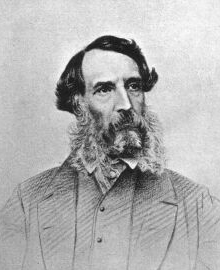Edward John Eyre
Edward John Eyre(1815–1901) was an early explorer
of the inland regions of New South Wales, South Australia,
and Western Australia.
In 1834 he purchased a property at Queanbeyan in NSW, but
lost all his stock to disease and so determined to try his
hand at overlanding sheep to Port Phillip and later to Adelaide.
He resolved to settle in Adelaide where he established a
home in 1838.
His experience in droving sheep and cattle led to exploring
and all his efforts always had a goal to find good grazing
country. In the course of his quests, he opened up much
of South Australia for settlement.
Eyre attempted to open up a route to the centre of Australia
in 1839 and again in 1840 on behalf of some Adelaide businessmen
because it was thought there was a huge inland sea or lake
and as a consequence good land. This expedition reached
Mt Hopeless when Eyre gave up the attempt due to great difficulties
brought about by the arid sandy country.
He determined to open up a cattle route from Fowlers Bay
SA to Albany WA and hoped to discover good land on the journey.
This incredible journey was undertaken in 1841.
On his return to Adelaide, Eyre was made a magistrate and
protector of the aborigines at Moorundie.
His short association with the colony ended in December
1844 when he sailed for England.
In 1846 Eyre was appointed lieutenant governor of New Zealand.
In 1853 Eyre returned to England and from 1854 served
as
lieutenant governor of St Vincent, acting governor of the
Leeward Islands, and governor of Jamaica. He suppressed
a serious mutiny in October 1865, but he was recalled following
the court-martial and hanging of a member of the legislature
who had been implicated in the uprising.
In England there
was a public outcry over the matter and Eyre was arrested
several times for murder and other
charges but these were never followed up. Regardless,
the matter raised
great
debate
in England with worthies lining up to defend and criticise
Eyre. His reputation damaged, Eyre retired from public
office to Walreddon Manor, near Tavistock DEV, where
he lived in seclusion
until
his death on 30 November 1901. He was buried in Whitechurch
churchyard, near Tavistock. He was survived by his widow,
Adelaide Fanny, whom
he had
married in 1850, four sons and a daughter.
In South Australia his exploratory efforts are recognised
by Lake Eyre and the Eyre Peninsula.
|